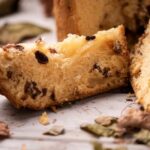Are you looking to learn how to preserve flowers for cake decorating? Preserving flowers is an essential skill for cake decorators, as it allows for the use of beautiful, natural decorations that can enhance the overall appearance of a cake. Using preserved flowers in cake decorating offers numerous benefits, such as longevity and versatility in design. In this article, we will explore the importance of preserving flowers for cake decorating and provide valuable tips and techniques for successful preservation.
When it comes to choosing the right flowers for cake decoration, the options are seemingly endless. Some of the most popular types of flowers that can be preserved include roses, lavender, chamomile, and daisies. These flowers are known for their ability to retain their shape and color even after preservation, making them ideal choices for adorning cakes.
There are several methods for preserving flowers, each with its own unique advantages. From air-drying to using silica gel or glycerin, there are various techniques that can be employed to ensure that the preserved flowers maintain their beauty and integrity. Understanding these methods is crucial for achieving the best results when preserving flowers for cake decorating.
Types of Flowers That Can Be Preserved
When it comes to cake decorating, using fresh flowers can add a beautiful and natural touch to your creations. However, using preserved flowers for cake decorating offers a number of advantages.
Preserving flowers allows them to maintain their shape, color, and texture for extended periods of time, making them ideal for use in cake decorations. Whether you are a professional baker or simply enjoy baking as a hobby, learning how to preserve flowers for cake decorating can enhance the visual appeal of your cakes and provide a unique and elegant touch.
There are several types of flowers that lend themselves well to preservation for cake decorating. Some popular choices include roses, lavender, calendula, and pansies. These flowers are known for their vibrant colors and distinct shapes, which make them visually appealing when used as cake decorations. Additionally, these flowers have sturdy petals that hold up well during the preservation process, ensuring that they will remain intact and beautiful on your cakes.
Preserving flowers for use in cake decorating involves careful attention to detail and the use of specific techniques to maintain their natural appearance. Air-drying is one method commonly used for preserving flowers. This involves hanging the flowers upside down in a warm, dark area with good air circulation until they are completely dry.
Another method is using silica gel, which helps remove moisture from the flowers while maintaining their shape and color. Glycerin is another popular method for preserving flowers as it helps maintain the softness and flexibility of the petals. Lastly, pressing is a simple yet effective way to preserve flat-shaped blooms such as daisies and pansies.
The key to successfully preserving flowers for cake decorating lies in choosing the right type of flower and applying the appropriate preservation method. By carefully following the step-by-step instructions for each preservation technique, you can ensure that your preserved flowers will maintain their natural beauty and enhance the visual appeal of your cakes.
| Types of Flowers Suitable for Preservation | Preservation Methods |
|---|---|
| Roses | Air-Drying |
| Lavender | Silica Gel |
| Calendula | Glycerin |
| Pansies | Pressing |
Methods for Preserving Flowers
Preserving flowers for cake decorating is a crucial step in ensuring that the flowers maintain their beauty and shape while also being safe for consumption. There are several methods that can be used to preserve flowers, each with its own unique process. Here are some popular methods for preserving flowers:
- Air-Drying: This method involves hanging the flowers upside down in a warm, dry area to naturally dehydrate them. The process typically takes about two weeks and works well for flowers with sturdy stems such as roses, lavender, and baby’s breath.
- Silica Gel: Silica gel is a desiccant that rapidly absorbs moisture from the flowers, allowing them to dry quickly while maintaining their color and shape. This method is ideal for delicate blooms like peonies, daisies, and pansies.
- Glycerin: Glycerin is used to replace the sap in the flowers, resulting in pliable and long-lasting preserved blooms. It works best for woody stems like eucalyptus, branches, and foliage.
- Pressing: Pressing involves flattening the flowers between absorbent paper under weight to dehydrate them. This method is great for creating floral decorations with a vintage look and works well with small blooms like forget-me-nots, violets, and daisies.
It’s important to carefully follow the instructions for each preservation method to achieve optimal results. By choosing the right method based on the type of flower being preserved, cake decorators can ensure that their floral decorations will enhance the overall appearance of their cakes.
No matter which preservation method is chosen, it is essential to handle the flowers with care throughout the process. Proper preservation ensures that the flowers remain visually appealing without compromising their natural beauty.
By learning how to preserve flowers for cake decorating using these methods, cake decorators can confidently create stunning floral arrangements that elevate their cake designs while also delighting those who enjoy their confections.
Tips for Successful Flower Preservation
Ensure Proper Handling and Care
When it comes to preserving flowers for cake decorating, proper handling and care are essential. It’s crucial to select fresh, blemish-free flowers for preservation. Once the flowers are harvested, they should be stored in a cool, dark place to maintain their freshness before beginning the preservation process. Additionally, handling the delicate petals with care is important to avoid any damage that could affect the final appearance of the preserved flowers.
Choose the Right Preservation Method
There are various methods for preserving flowers, and choosing the right one can greatly impact the outcome. Air-drying is a traditional and simple method that works well for sturdy flower varieties such as roses and daisies. Silica gel is another popular method that allows for quicker preservation while maintaining the shape and color of delicate blooms.
Glycerin preservation involves submerging flowers in a glycerin solution to maintain their flexibility and natural appearance. Pressing flowers between heavy books or using a flower press is suitable for creating flat preserved flowers ideal for cake decorating.
Monitor the Progress Closely
Regardless of the preservation method chosen, it’s important to monitor the progress closely to ensure that the flowers are drying or absorbing properly without any issues. Checking on the flowers regularly will allow you to make adjustments if needed and prevent any potential problems before it’s too late.
Keeping an eye on the color, texture, and overall condition of the preserved flowers throughout the process is vital for achieving successful results when it comes to preserving flowers for cake decorating.
By following these tips for successful flower preservation, enthusiasts can ensure that they are able to effectively preserve flowers for their cake decorating projects while maintaining their natural beauty and quality.
Choosing the Right Flowers for Cake Decorating
When it comes to choosing the right flowers for cake decorating, there are a few key factors to consider in order to ensure a beautiful and cohesive final product. Whether you are looking to add a pop of color, elegance, or a touch of whimsy to your cake design, selecting the perfect flowers can make all the difference. Here are some important tips on how to choose the right flowers for cake decorating.
Tips on Selecting Flowers
When choosing flowers for cake decorating, it’s essential to consider the overall theme and style of the cake. If you have a specific color palette in mind, look for flowers that complement or accentuate those colors.
For example, if you’re aiming for a romantic and soft aesthetic, opt for delicate blooms like roses or peonies. On the other hand, if you want to create a vibrant and bold look, consider using bright and eye-catching flowers such as sunflowers or dahlias.
Factors to Consider
In addition to color, size is another important factor to take into account when selecting flowers for cake decoration. You’ll want to choose flowers that are proportionate to the size of your cake tiers and won’t overwhelm the overall design. It’s also crucial to ensure that the flowers you choose are safe for consumption if they will be in direct contact with the cake.
Lastly, consider the compatibility of the flowers with the type of icing or frosting used on the cake. Some flowers may wilt or discolor certain types of frosting, so it’s important to choose blooms that will hold up well.
Preserved vs Fresh Flowers
While fresh flowers are often preferred for their natural beauty and fragrance, preserved flowers offer several advantages for cake decorating. Preserved flowers have a longer shelf life and can withstand varying temperatures and conditions without wilting or browning.
They also allow for more flexibility in terms of planning and preparation since they can be preserved well in advance. When choosing between preserved or fresh flowers for cake decorating, consider your specific needs and preferences as well as the practicality of each option.
Overall, choosing the right flowers for cake decorating involves careful consideration of color, size, compatibility with frosting, and whether preserved or fresh blooms best suit your needs. By taking these factors into account, you can elevate your cake designs with visually stunning floral elements that enhance the overall aesthetic appeal.
Safety and Precautions
When it comes to preserving flowers for cake decorating, it is important to prioritize safety and take necessary precautions to prevent any potential health hazards associated with preserved flowers. Here are some important safety measures to keep in mind when working with preserved flowers for cake decoration:
Proper Ventilation
It is crucial to work in a well-ventilated area when preserving flowers for cake decorating. This is especially important when using methods such as air-drying or silica gel, as the chemicals and fumes released during the preservation process can be harmful if inhaled. Make sure to open windows and doors to allow fresh air to circulate while you work.
Protective Gear
Wearing protective gear, such as gloves and a face mask, can help minimize direct exposure to any potentially harmful substances used in the preservation process. Gloves will also protect your hands from coming into contact with any chemicals or plant sap that may cause irritation or allergic reactions.
Safe Handling of Chemicals
If you are using preservation methods that involve chemicals such as glycerin, it is important to handle them with care. Always read and follow the instructions on the product labels, and ensure that these chemicals are stored out of reach of children and pets.
By following these safety measures and precautions, you can ensure a safe and enjoyable experience when preserving flowers for cake decorating. Taking the time to prioritize safety will allow you to fully enjoy the creative process without compromising your well-being.
Incorporating Preserved Flowers Into Cake Designs
When it comes to cake decorating, preserved flowers can be a stunning addition that adds natural beauty and elegance to any baked creation. Preserving flowers for cake decorating allows you to use a wide variety of blooms that may not be available fresh or in season, providing endless options for creativity and design. Whether you are a professional baker or a hobbyist, incorporating preserved flowers into your cake designs can take your creations to the next level.
One popular method for preserving flowers for cake decorating is air-drying. This simple technique involves hanging flowers upside down in a cool, dark place until they are completely dry. Another common preservation method is using silica gel, which helps maintain the shape and color of the flowers. Glycerin is also used to preserve flowers by replacing their natural moisture with glycerin, resulting in soft, flexible blooms that can last for months.
It is important to note that not all flowers are suitable for preservation. When choosing flowers for cake decorating, look for blooms with sturdy petals and minimal moisture content. Roses, peonies, hydrangeas, and baby’s breath are popular choices for preservation due to their resilience and long-lasting qualities. By selecting the right types of flowers and employing proper preservation techniques, you can ensure that your preserved blooms will be beautiful and safe to use as cake decorations.
| Preservation Method | Flowers Suitable for Preservation |
|---|---|
| Air-Drying | Roses, Peonies |
| Silica Gel | Hydrangeas, Baby’s Breath |
| Glycerin | Lavender, Ferns |
Conclusion
In conclusion, preserving flowers for cake decorating is not only important but also a beautiful art form that adds an extra touch of elegance to any cake. The ability to preserve flowers opens up a world of possibilities for cake decorators, allowing them to use a wide variety of blooms in their designs regardless of the season.
Whether it’s delicate rose petals or vibrant daisies, preserved flowers can elevate the visual appeal of cakes and make them truly stand out.
Learning how to preserve flowers for cake decorating may seem like a daunting task at first, but with the right methods and techniques, it can be easily accomplished. The step-by-step guide provided in this article on various preservation methods such as air-drying, silica gel, glycerin, and pressing offers valuable insights on how to successfully preserve flowers.
By following these instructions and incorporating the tips for successful flower preservation, decorators can ensure that their preserved flowers retain their natural beauty and shape.
When it comes to incorporating preserved flowers into cake designs, the possibilities are endless. From simple arrangements to elaborate displays, preserved flowers can transform ordinary cakes into stunning works of art. Moreover, by choosing the right flowers based on color, size, and compatibility with the cake design, decorators can create visually striking compositions that captivate anyone who sees them.
With the proper safety measures in place and a creative eye, preserved flowers can enhance the overall appearance of cakes and open up an exciting new avenue for cake decoration enthusiasts. So go ahead and try your hand at preserving flowers for your next cake decorating project – you won’t be disappointed with the results.
Frequently Asked Questions
How Do You Preserve Fresh Flowers for a Cake?
Fresh flowers can be preserved for a cake by using flower picks or straws to create a barrier between the stems and the cake. You can also use floral tape to cover the stems and ensure they don’t touch the cake directly.
What Fresh Flowers Are Safe to Put on a Cake?
Not all fresh flowers are safe to put on a cake, as some may be toxic. Safe options include roses, daisies, violets, pansies, and marigolds. It’s important to thoroughly research each type of flower before using it on a cake.
How Do You Protect a Cake From Real Flowers?
To protect a cake from real flowers, you can wrap the stems with floral tape or insert them into food-safe plastic tubes before placing them on the cake. This ensures that no sap or toxins from the flowers come into direct contact with the cake’s surface.

Welcome to my blog about home and family. This blog is a place where I will share my thoughts, ideas, and experiences related to these important topics. I am a stay-at-home mom with two young children. I hope you enjoy reading it! and may find some helpful tips and ideas that will make your home and family life even better!





